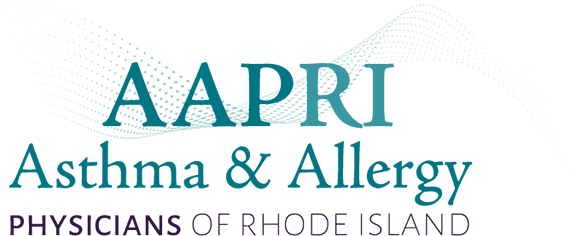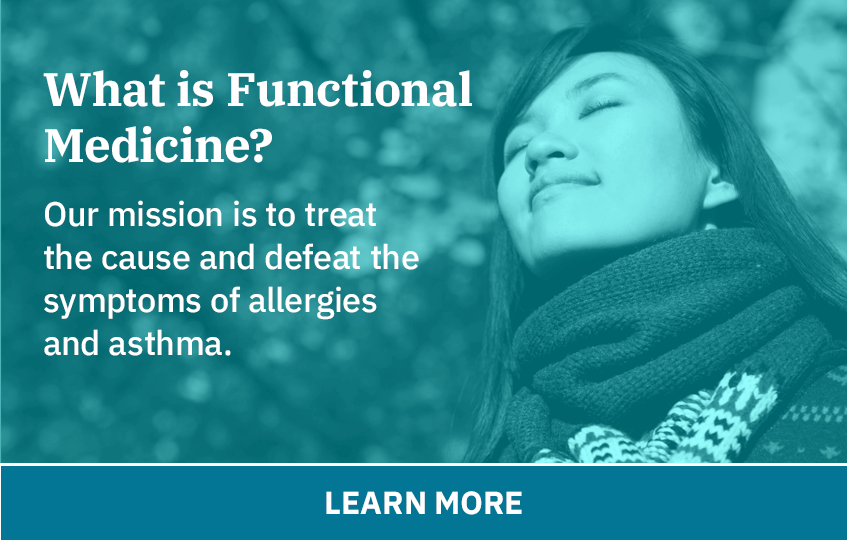It’s time to start cozying up for the fall season, complete with cider, apple picking, and fun with your pumpkins! While this all sounds so very magical and sweet, there is also the looming yard clean up in preparation for the winter (gasp!). And it’s also time to think about fall allergies. Wait … what? I need to worry about allergies in the fall too? Yes! Today we will break it all down for you so that you can still enjoy your pumpkin spice and everything nice.
When it comes to seasonal allergies, we typically think of the pollen exposure in springtime. However, teary eyes, an itchy throat and sniffling and sneezing are not exclusive to the months of April and May. In fact, when the leaves start to fall and the air cools off, a host of allergens can cause the same miserable symptoms you experience in the spring. Fun times!
Ragweed: A typical cause of fall allergies
The biggest culprit causing these uncomfortable symptoms is ragweed. Even though it starts to release pollen with cool nights and warm days in August, it can linger into September and October. You may even experience headaches with a ragweed allergy.
After ragweed season ends, we then get to worry about mold spores. In our temperate climate here in the Northeast, mold spores form a distinct fall season in mid to late fall, after ragweed season is over. Mold spores are tiny, light and easily inhaled into the lungs. They grow on wet leaves and decomposing plants.
Is it an allergy or a cold?
Both ragweed and mold exposure can trick you into thinking you are coming down with a cold. If you suspect you or your kiddos might be, think about the timing and progression of the symptoms. Colds often cause symptoms one at a time; first the sneezing, followed by a runny nose and congestion. Allergy symptoms, however, hit you all at once. Check the duration of the symptoms too. Cold symptoms usually last for 7-10 days while allergy symptoms continue with exposure to the allergen.
Here are some great tips to help you manage your fall allergies:
- Check pollen levels. Here is a great resource to see your local pollen counts and allergens in your area.
- Wear protective clothing and a mask. Who said raking leaves wasn’t a superhero’s work?
- Avoid hanging clothes outdoors to dry. They’ll collect pollen and mold.
- If you have a severe mold allergy, avoid yard work altogether. Don’t rake leaves or work with hay or mulch if you’re allergic to mold.
- Time your workouts. Exercising earlier in the day before the winds pick up is a great strategy
- In your home, use a dehumidifier and an air conditioner. Install a HEPA filter on your air-conditioning system.
- When driving, keep your car windows rolled up and the air conditioner on.
- Take your medication as prescribed.
- Shower off the pollen after doing yard work. Remember to leave your shoes at the door to avoid tracking allergens throughout the house.
- Eat healthy. In one study, children who ate lots of fresh vegetables, fruits, and nuts, particularly grapes, apples, oranges, and tomatoes, had fewer allergy symptoms.
- Rinse it out: A nasal rinse cleans mucus from your nose and can ease allergy symptoms. Buy a rinse kit or make one using a neti pot or a nasal bulb. Mix 1/2 teaspoon salt with a pinch of baking soda in 8 ounces of warm distilled or sterilized water. Lean over a sink and gently flush one nostril at a time.
- Drink more: If you feel stuffy or have post nasal drip from your allergies, sip more water, juice, or other non-alcoholic drinks. The extra liquid thins the mucus in your nasal passages. The steam from hot fluids like teas, broth, or soup have added benefits.
- Keep your home clean but avoid harsh chemicals as they can irritate your nasal passages and aggravate your symptoms. Make natural cleaners with everyday ingredients like vinegar or baking soda. Use a vacuum cleaner that has a HEPA filter to trap allergens.
- Inhale some steam and breathe easier. Hold your head over a warm (but not too hot) bowl or sink full of water, and place a towel over your head to trap the steam. Or sit in the bathroom with a hot shower running.
- Consider acupuncture. This ancient practice may offer some relief. It is unclear how acupuncture affects nasal allergies, but a few studies show that it may help. Ask your doctor if it might help you.
- For ragweed allergy sufferers, avoid bananas, melon, zucchini, sunflower seeds, cucumber, chamomile tea and honey as they can also cause symptoms.
- Know your triggers. You may think you know what the problem is. But are you sure? Making an appointment with an allergist is the best way to pinpoint your triggers and how to avoid them.
Conclusion
Dealing with fall allergies can be challenging, especially if you love the outdoors. It’s so important to be one step ahead by knowing what triggers your allergies and how to relieve your symptoms. Relief comes in many forms, whether you choose to delegate the leaf raking (great choice!) or face it head on, superhero gear in tow. With some clever planning and preparation, you can enjoy the best of this lovely season, either in or outdoors. Did someone say hot apple pie?

